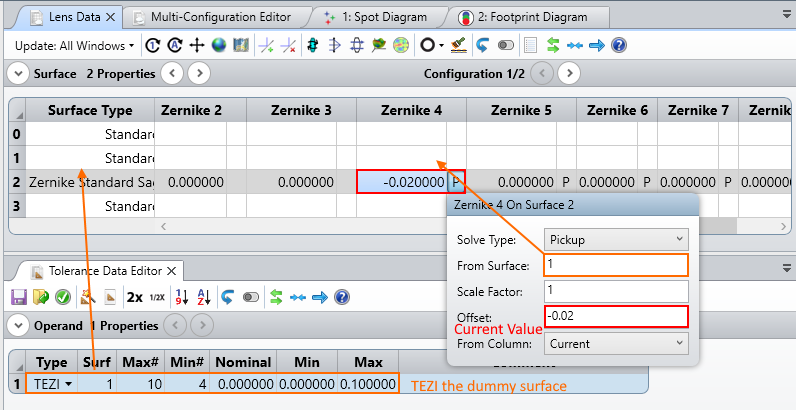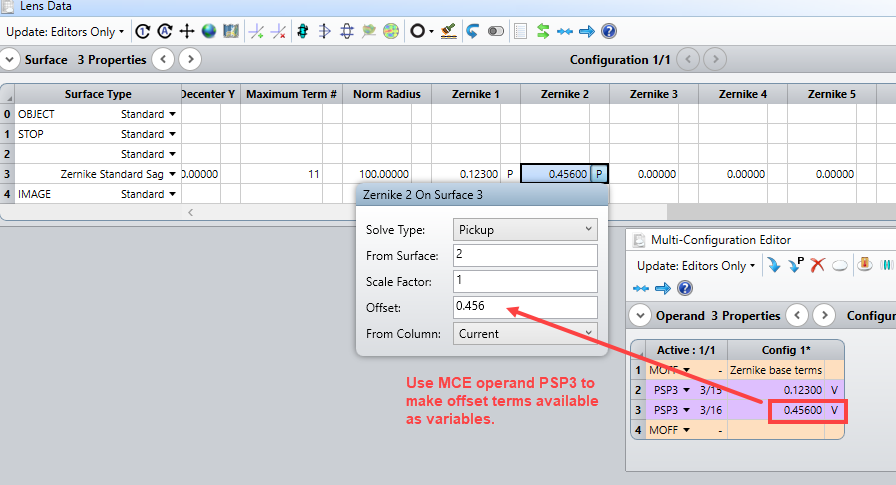I am trying to tolerance a Zernike for irregularity. I noticed that for other rotationally symmetric shapes, you can use the TEZI operand to introduce irregularity tolerance. This converts the rotationally symmetric shape to a standard zernike surface and introduces the tolerances. But my design has a zernike surface already and I was wondering if there is a way to use the TEZI directly. If not, is there a work around to it?
Extension of the above question : How do you tolerance any freeform surface (extended polynomial, chebyshev etc..) for irregularity? Does zemax have any inbuilt tolerance operand to do the same?
Thanks in advance.








